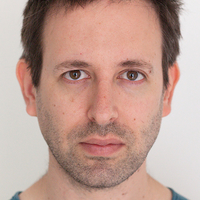- Goldsmiths, University of London, Forensic Architecture, Faculty MemberGoldsmiths, University of London, Visual Cultures Centre For Research Architecture, Department Member, and 2 moreadd
Research Interests:
New forms of computational 3D imaging have given rise to a new photographic condition—one in which the flat image is replaced by an omni-directional spatial data constellation, and in which viewing is defined by immersive navigation. The... more
New forms of computational 3D imaging have given rise to a new photographic condition—one in which the flat image is replaced by an omni-directional spatial data constellation, and in which viewing is defined by immersive navigation. The ‘spatial photograph’, as I term it, does not flatten reality onto a chemical grain emulsion surface or a plane of discrete pixels, rather, in this highly computational environment, physical surface is transcoded onto a mirrored digital terrain of spatially distributed, discrete coordinate points.
‘Spatial Photography’ comes to contest both the ocular perspectival gaze of onarchic land ownership and control as well as the Cartesian flat abstraction of the map with its view from nowhere (or from a satellite). Fusing survey and perspectival imaging, optical media has gradually technologically developed to incorporate a multiplicity of images and sources, that are both perspectival and projective, communal, situated and multiple. While primarily developed by states, military and industry, permeating and restructuring them from the inside, it simultaneously opens new spaces for civic-led counter practices.
Situated predominantly within the geo-political context of Israel, my homeland, I fol-
low the changing role of the photographic as it is implicated within the larger ethno-po-
litical conflict, manifesting through a spatial entanglement of volume, control, opacity and vision.
Constructed in an intertwined manner between a research project and an artists prac-
tice, through two dedicated projects, one in East Jerusalem (Silwan and City of David),
the other in the Naqab Desert (Unrecognised Bedouin village of al-Araqib), this thesis
offers a counter-dominant spatial photographic practice, reframed within new epistemology. ‘Spatial Photography’ is not simply a changed mode of mechanical production but rather, a vehicle for the creation of relation between different people and machinic systems, taking, analysing and producing spaces, that together add up to a socio-techno-political community of practice.
‘Spatial Photography’ comes to contest both the ocular perspectival gaze of onarchic land ownership and control as well as the Cartesian flat abstraction of the map with its view from nowhere (or from a satellite). Fusing survey and perspectival imaging, optical media has gradually technologically developed to incorporate a multiplicity of images and sources, that are both perspectival and projective, communal, situated and multiple. While primarily developed by states, military and industry, permeating and restructuring them from the inside, it simultaneously opens new spaces for civic-led counter practices.
Situated predominantly within the geo-political context of Israel, my homeland, I fol-
low the changing role of the photographic as it is implicated within the larger ethno-po-
litical conflict, manifesting through a spatial entanglement of volume, control, opacity and vision.
Constructed in an intertwined manner between a research project and an artists prac-
tice, through two dedicated projects, one in East Jerusalem (Silwan and City of David),
the other in the Naqab Desert (Unrecognised Bedouin village of al-Araqib), this thesis
offers a counter-dominant spatial photographic practice, reframed within new epistemology. ‘Spatial Photography’ is not simply a changed mode of mechanical production but rather, a vehicle for the creation of relation between different people and machinic systems, taking, analysing and producing spaces, that together add up to a socio-techno-political community of practice.
